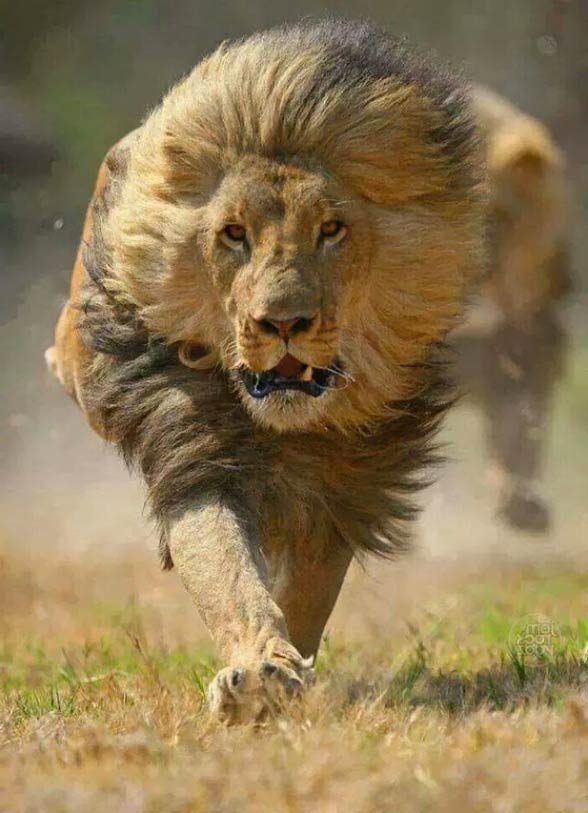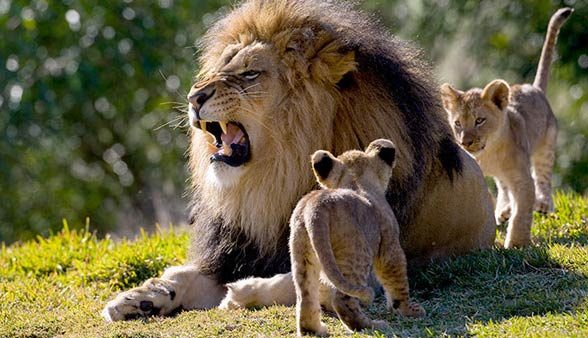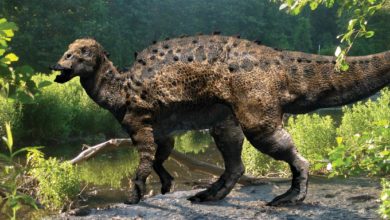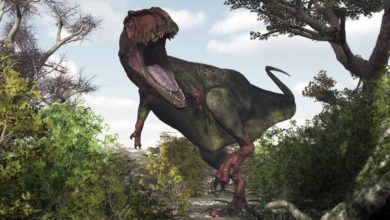Man-eating lions
The title of our article could have also been the title of a gory horror movie because there would be hectoliters of blood and limbs detached from bodies. Sounds gruesome? It surely does. Nevertheless, remember that similar scenes have taken and are taking place where you can find the most effective world killers (and we do not mean Michael Myers from the movie “Halloween”). Although there have been no reports of serial man-eating lions, each year in Tanzania alone these big cats kill more than 100 people.
Hard laws of logic and nature leave no illusions – in touch with the hungry and desperate lion unarmed man has no chance.
You’d better keep it in mind it before you decide to approach any big and potentially dangerous animal. This article, however, will not be about unfortunate accidents caused by human’s bravery. We will describe situations in which a lion turned out to be the attacking party.

What animals we consider to be man-eaters?
It may seem irrelevant – everyone knows what the word “man-eater” means. Establishing an appropriate definition may, however, broaden the image and let you get rid of wrong ideas.
Man-eaters are animals that hunt people for food. Thus, the definition of a man-eater does not include animals feeding on bodies they just find. It is all about actively hunting animals. Moreover, man-eaters are not animals that happened to have attacked a human only once. Only when a given individual includes human meat into its usual diet, we can call it a man-eater.
Humans are preys of big mammals, such as tigers, hyenas, leopards, bears, hippos or lions. From time to time, they are also part of crocodiles, Komodo dragons and sharks’ menus. Today we present man-eating lions, although it is only the beginning of the story.

A story of Tsavo, and more
One of our articles describes Tsavo lions. A story from more than a century showed that the beautiful, maned predators may have murderous tendencies towards people. To this day, the motives of Tsavo lions have not been found, although there are many theories.
This article will not focus only on the abovementioned example, because history knows other similar cases and we will try to tell you about them in this very article.

The White Lion Charlie
White fur was not the only characteristic feature of Charlie; it also had a noticeably shortened tail. It used to hunt in the Chiengi district, situated on the border of former Northern Rhodesia, now Zambia. In 1909, the lion came into a spotlight because of its evident taste for human meat. During its “career”, the lion formed a group with two other males and together they attacked several African villages. It is said that Charlie and its pals have eaten about 90 people.
It was invincible – it would effectively avoid traps set by hunters. It also managed to finagle the best shooters in the country. At some point, though, good fortune left Charlie – it was shot from a pistol.

Msoro Monty
In 1929, eastern Zambia became the home of a lion hunting in the region of the Luangwa River. It had an incredible ability of detecting and avoiding traps. It could never be captured – after killing many people, it vanished without a trace.

Lion of Mfuwe
This lion also terrorized Zambians. However, it took place at the beginning of the 1990s. Allegedly, after killing about six people, the lion walked proudly through the center of the village, with one victim’s bag in its mouth. However, it became the victim of a Californian citizen, who was fond of safari. The animal was shot after a 20-day-long hunt. The man-eater was over 3 meters long. Moreover, it had a reduced mane, similarly to the Tsavo lions.

Osama
Between 2002 and 2004 in Tanzania, a lion with a meaningful name – Osama – was accused of killing over 50 people from 8 different villages. It killed men and women, but it was sometimes assisted by other lions during hunting.
It was given its name not only because it terrorized people, but also because of its fame caused by the killings. At that time, information about the African Osama was in the first pages of Tanzanian newspapers.
The animal was found and killed in April 2004. It was suspected that the over 3.5 years old lion hunted people because of a large abscess on one of his molars. However, this theory has poor grounds because other man-eating lions had perfectly healthy teeth. Yet, it is believed that Osama’s taste for human meat has come from his mother that also hunted people.

The Man-Eaters of Njombe
In that case, a group of 15 lions was responsible for the death of even 1,500 people. The dreadful hunting took place in 1932-1947, in southern Tanzania (Njombe Region). Culling a great number of ungulates (natural prey of African lions), suffering from rinderpest, is suspected to have been the main reason for the situation. Hungry lions had to choose: to starve or to change their prey.
People were attacked in the middle of the day, and at night, the cats traveled 20-30 km to other villages that had not been attacked yet. It was said that the lions had treated human bodies as their usual food – after hunting, they would drag them into the bush to hide them from other predators. In 1947, the pride was, however, hunted down and shot.

Tsavo lions
During the construction of a railway bridge over the Tsavo River in Kenya, workers started to become preys of large and maneless lions. According to calculations, the Tsavo lions killed about 130 people over 9 months. However, it has not been proved in 100%. It is known that due to nighttime people hunting, many workers fled from their workplace, which stopped the construction of the bridge.
The lions were killed by Lieutenant-Colonel Patterson, and their bodies were taken to his house first, and then to the Chicago museum as museum pieces.
This bloody story was an inspiration for a fictional film describing the events of 1898. The film was called “The Ghost and the Darkness”. Learn more from a separate article: Tsavo lions.

Man-eating lions – interesting facts
- The body of the Lion of Mfuwe is in the Field Museum of Natural History in Chicago.
- Although the above list includes mostly male lions, according to ecologist Craig Packer from the University of Minnesota, lionesses are responsible for the majority of killings. Females feed on people, however only in extreme situations. After that, they continue their usual diet, but males tend to attack people in a serial manner.
- In the Addo Elephant National Park in South Africa, there are warning signs informing that during the safari, getting out of the car may end up with being attacked by a lion. Leaving the car is not forbidden, but only the daredevil is responsible for the life-threatening consequences.
- In 2005, a television film called “The Man-Eating Lions of Njombe” was created.



















